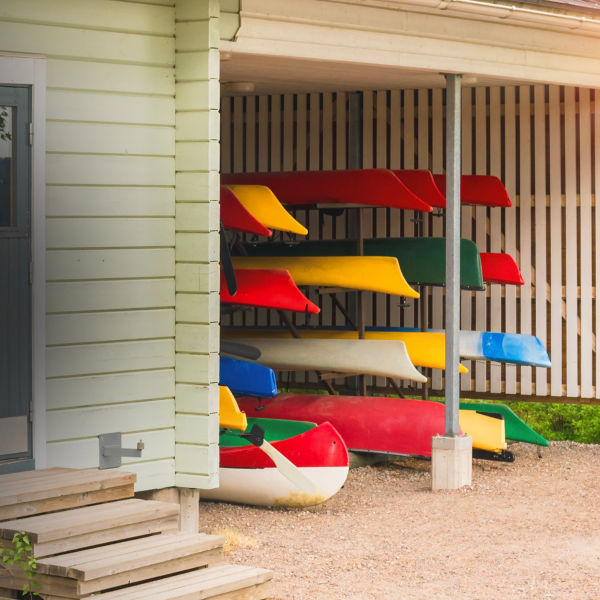
If you’re paddling in cold water and weather, be it ocean touring, canoeing, or whitewater kayaking, you’re going to need a dry suit, which keeps you dry and warm (with proper insulating layers) when immersed. While wicking and neoprene wetsuit layers have their place on shorter trips and in warmer waters, a full dry suit is a key piece of safe paddling equipment that not only extends your season, but that also allows you to be on the water longer. And if you end up in the water, a dry suit reduces the risk of hypothermia, increasing your ability to conduct a self-rescue or aid others in your group. Consider your level of exposure and risk—in terms of where you’re paddling, your ability level, the conditions and water temperature—to see if this investment in safety and comfort is the right choice for you.
Types
Dry suits come in a variety of types, primarily front- and rear-entry. The main difference involves zipper placement.
Front-entry dry suits have the zipper across the chest, typically diagonally from the shoulder to the opposite hip. This makes the suit easier to get on and off, and the zipper easier to open and close; the downside is the zipper can interfere with your spray skirt’s tunnel and cause the suit to “billow” a bit across the chest.
Rear-entry dry suits place the zipper across the back of the shoulders, which makes it slightly harder to fasten and release, but keeps the zipper out of the way and from interfering with your spray skirt. Kokatat’s Switch Zip dry suit has the zipper around the waist, letting it work as separate dry pants and dry top, or, when fastened, a full dry suit. Most dry suits also have a horizontal relief zipper up front for urinating, with women-specific models often including a rear drop zipper for the same purpose. It all comes down to preference. Note: Try it on at the shop with a PFD to see how comfortable the zipper location feels.
Fit
This is an important factor with dry suits. You want it big enough to offer freedom of movement and comfort with room for medium-weight insulation layers underneath, but snug enough to function well if you swim (the baggier your suit, the tougher it is to swim). Many manufacturers have their own sizing charts and measurement definitions so try it on in a crouched and seated position before you buy. Hint: If you’re between sizes, go up a size instead of down.




















